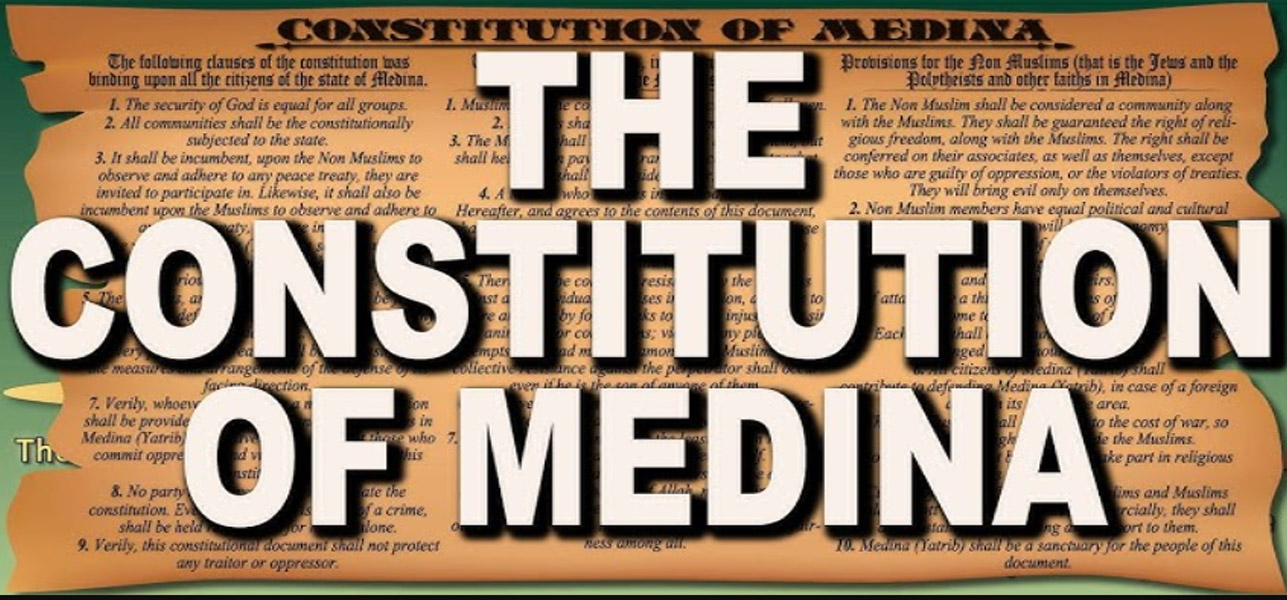Introduction: A Silent Revolution
The Constitution of Medina (622 CE) achieves something extraordinary: it never mentions Islam as the state religion, nor declares the Qur’an as the source of law—yet every clause embodies Qur’anic principles.
The Political Genius of Prophet Muhammad (ﷺ): Substance Over Symbols
This historic document reveals the Prophet’s (ﷺ) unparalleled statecraft: he demonstrated that true Islamic governance is measured not by slogans or imposed religious labels, but by the tangible implementation of divine values. By designing a constitution that omitted explicit Islamic terminology yet systematically enshrined Qur’anic justice (‘adl), consultation (shura), and pluralism, Muhammad (ﷺ) proved that Islam’s political strength lies in its ethical outcomes—not rhetorical posturing. The pagan and Jewish citizens of Medina willingly embraced this system because it delivered fairness, not because it demanded theological conformity—a lesson modern Muslim societies urgently need to relearn.
The Lesson for Muslims Today:
Governance > Theology: The Constitution’s authority derived from its results, not divine claims.
Values Without Verse: It translated Qur’anic ideals into civic structures without quoting scripture.
A Challenge to Modern States: Contemporary “Islamic” regimes ritualize sharia while violating its essence (e.g., oppression in the name of religion).
Part 1: How the Constitution Embodied Qur’an Without Quoting It
- The Missing Shahada
Unlike modern Muslim constitutions, the text never opens with “In the name of Allah” – yet its clauses reflect:
Qur’an 4:135 (justice) → Equal rights for Jews in courts
Qur’an 49:13 (human dignity) → Abolition of tribal supremacy
- The Absent Sharia
No hudud punishments or fiqh terminology appear. Instead:
Restorative Justice (fines for murder) mirrored Qur’anic mercy (5:45)
Voluntary Zakat aligned with “There is no compulsion in religion” (2:256)
- The Prophet’s Methodology
Muhammad (ﷺ) didn’t impose Islam – he let the system’s success convert people:
Pagans embraced Islam after witnessing justice
Jewish tribes voluntarily allied until violating treaties
Part 2: The Crisis – Why Modern “Islamic” Constitutions Fail the Medina Test
Most Muslim-majority constitutions today:
Declare Islam as state religion but permit dictatorship
Quote Qur’an extensively while violating its core values
Exclude minorities despite Medina’s explicit inclusion of Jews
Medina’s Standard: A constitution is Islamic not by labeling, but by delivering:
Security for all citizens (“No Jew shall be wronged for being Jewish”)
Accountability of rulers (“The believers must avenge the blood of one another”)
Part 3: The Way Forward – Beyond Ritual to Reality
The Constitution of Medina issues a challenge:
To Scholars: Stop fetishizing “sharia compliance” on paper – focus on outcomes
To Activists: Demand systems that do what Medina did, not just cite what it said
To Ordinary Muslims: Realize that calling a state “Islamic” doesn’t make it so
Conclusion: The Living Document
When the Qur’an says “This is a blessed Book We have revealed… that you may ponder” (38:29), Medina’s Constitution is the ultimate tafsir – showing how divine wisdom becomes human action. That is the political thought we need to resurrect.
Final Call:
The choice is clear: Will we cling to hollow symbols of Islamic governance, or revive the Medinan model where:
Justice precedes proclamation
Inclusion defeats ideology
Results validate revelation
The Constitution of Medina awaits its rightful place – not as a historical relic, but as the living blueprint for Muslim political renewal.
